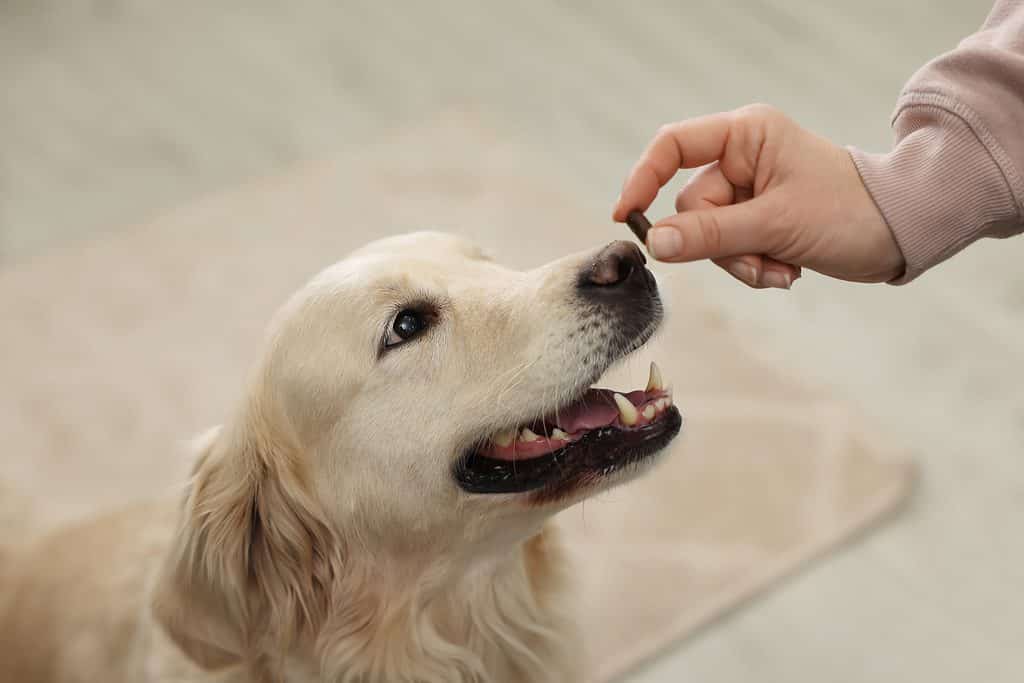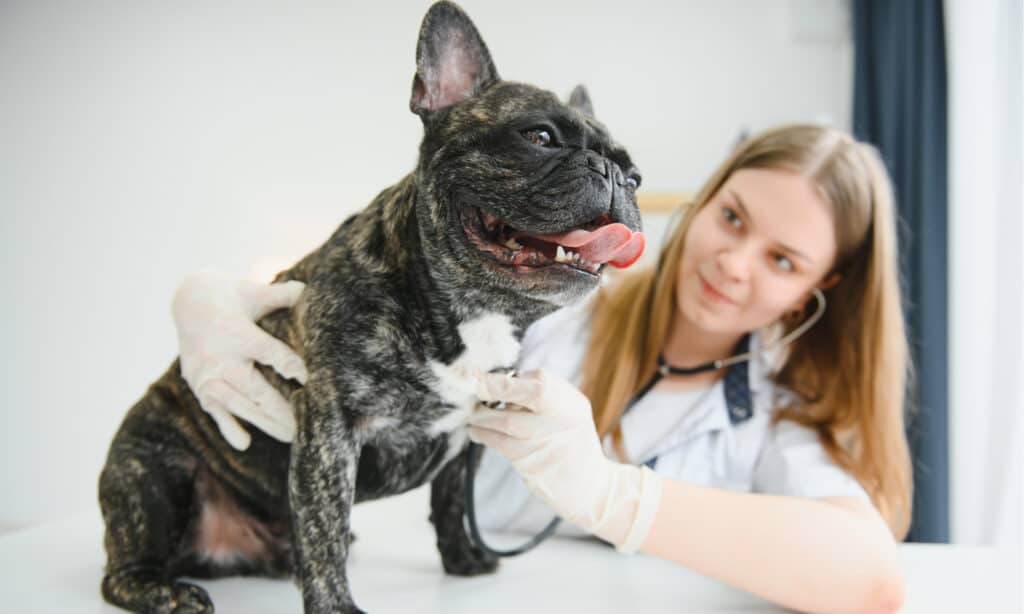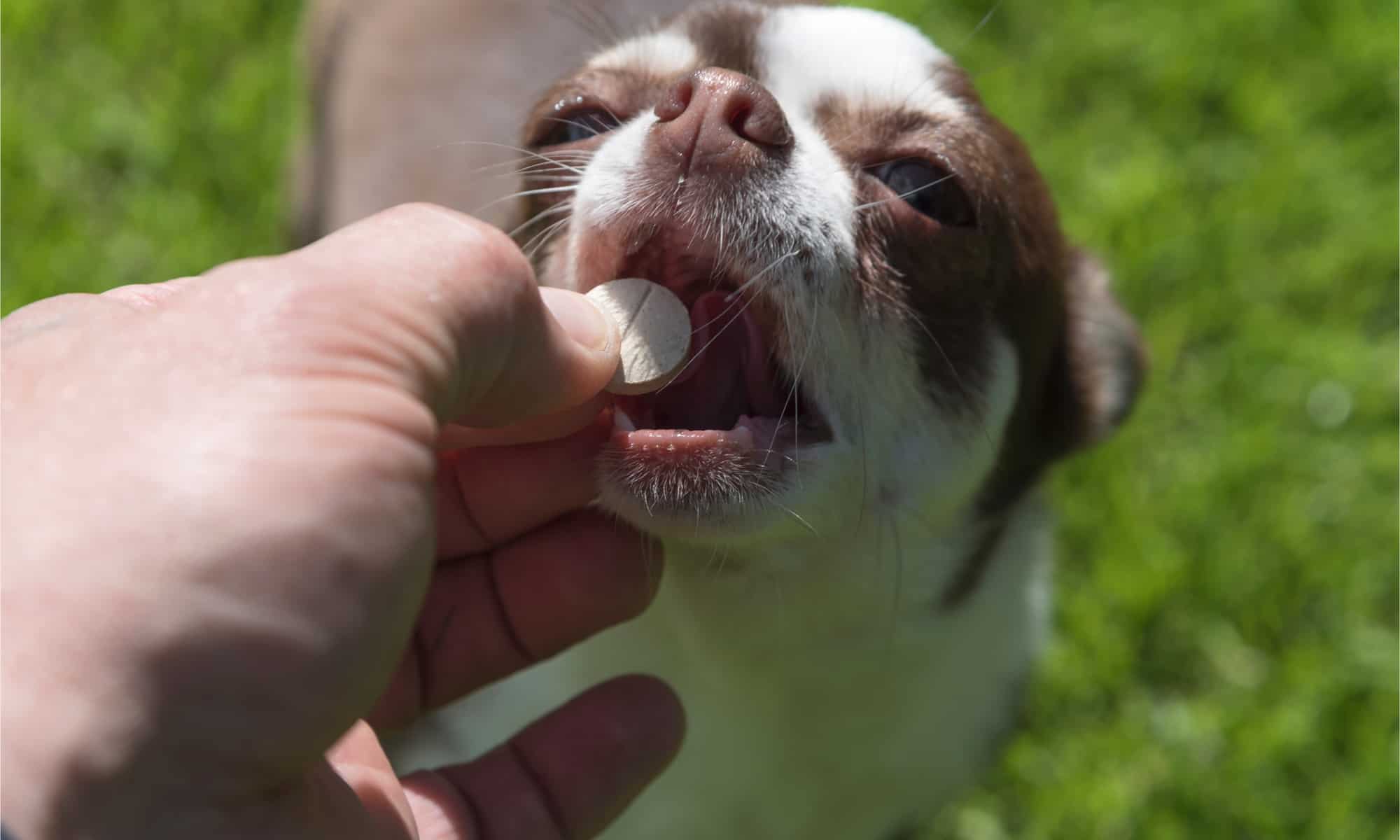Has your veterinarian prescribed enrofloxacin or Baytril to your dog with an infection? You likely have questions about what this medication is and how it works, so let’s break down everything you need to know about enrofloxacin use in dogs below!
What Is Enrofloxacin (Baytril)?

Enrofloxacin is a fluoroquinolone antibiotic that treats a variety of bacteria by blocking the bacteria’s DNA replication process.
©Jaromir Chalabala/Shutterstock.com
Enrofloxacin is a prescription antibiotic that is commonly sold under the brand name Baytril in a vet hospital setting. Enrofloxacin is a fluoroquinolone antibiotic that treats a variety of bacteria by blocking the bacteria’s DNA replication process. This prevents the bacteria from multiplying, ultimately putting an end to the dog’s infection. While enrofloxacin can treat a variety of infections, it is most effective when used against Pseudomonas and Staphylococci bacteria.
Is Enrofloxacin A Safe Medication?
Enrofloxacin is safe for use in dogs when following your veterinarian’s dosing instructions. While enrofloxacin, or Baytril, is generally safe for use in dogs, it is dangerous for humans to consume. Enrofloxacin ingestion in humans can lead to nausea, vomiting, dizziness, headache, seizures, rapid heart rate, and even liver dysfunction. Humans should never take enrofloxacin. It’s best to reach out to your doctor of you think you are fighting any kind of infection.
It’s important to seek prompt medical care if you or your child have accidently consumed enrofloxacin.
Why Do Dogs Take Enrofloxacin?

Enrofloxacin is used in dogs to treat skin infections, ear infections, respiratory infections, and urinary tract infections.
©New Africa/Shutterstock.com
Enrofloxacin is used to fight a variety of bacterial infections in our canine companions. Some of the most common reasons why vet’s prescribe Baytril to dogs include:
- Ear infections
- Skin infections
- Urinary tract infections
- Respiratory infections
Enrofloxacin may also be used off-label by your vet, meaning it can be used to treat issues outside of the standard infections it was intended to treat. For example, if your dog is suffering from a fever of unknown origin, then your vet may prescribe Baytril without knowing the exact cause or bacteria responsible for their symptoms.
How Do I Give My Dog Enrofloxacin?
Enrofloxacin is most commonly prescribed in pill form, but it can be compounded into a liquid if your little one struggles with taking pills. It works best when it is given on an empty stomach, but it can lead to nausea and vomiting in dog’s with a sensitive stomach. Most vets will prescribe a dose that should be given once every 12 to 24 hours.
It is safe to be given with a small meal if your little on struggles with nausea after taking their dose of enrofloxacin. Just be sure that you are never giving their dose of Baytril with dairy, as dairy effects the antibiotic’s effectiveness.
Enrofloxacin can also be given in injectable form at your vet’s office. Your vet may administer a Baytril injection if your pet has an infection that would benefit from immediate administration of the antibiotic, and you will the follow up with oral Baytril at home.
What Is The Dose Of Enrofloxacin For Dogs?

The standard enrofloxacin dose for dogs is 50 to 20 mg per kilogram of body weight in dogs
©Hryshchyshen Serhii/Shutterstock.com
Before we offer the standard dose for enrofloxacin (Baytril) use in dogs, we should state again that you should never give your dog enrofloxacin without veterinary approval. With that in mind, there is a standard enrofloxacin dose range that most veterinarians prescribe!
The standard enrofloxacin dose for dogs is 50 to 20 mg per kilogram of body weight in dogs, or 2.27 to 9.07 mg per pound of body weight. Enrofloxacin will be given once or twice daily based on the type of infection your dog is struggling with.
Are There Any Side Effects With Enrofloxacin Use In Dogs?
Enrofloxacin, or Baytril, is a generally safe antibiotic when following your vet’s dosing instructions. However, there are a few mild side effects you should be on the lookout for when your dog is taking this medication. Some of the most common side effects associated with enrofloxacin use in dogs include:
- Vomiting
- Decreased appetite
- Diarrhea
- Lethargy
- Abdominal pain
- Changes in behavior such as agitation, aggression, or confusion
We always suggest reaching out to your veterinary team if your dog develops any of the above side effects. Your vet may be able to adjust their dose to lessen their side effects, or even switch to a different treatment option if your little one is really struggling.
Dr. Amy Nicole Lewis, a veterinarian with Worldwide Veterinary Services told A-Z Animals that enrofloxacin is not often prescribed in puppies or other growing animals. Antibiotics of the fluoroquinolone class have been known to cause abnormal cartilage development in growing animals, so your vet will likely explore other antibiotic options for your growing pup. For this reason, we do not advise giving your puppy any antibiotics without your vet’s approval.
How Can I Get Enrofloxacin For My Dog?
Enrofloxacin is a common antibiotic used to treat ear infections, skin infections, respiratory infections, and urinary infections in dogs. Enrofloxacin, or Baytril, can only be purchased at your vet’s office. We suggest reaching out to your veterinary team if you think your little one could benefit from the use of this powerful antibiotic.
Ready to discover the top 10 cutest dog breeds in the entire world?
How about the fastest dogs, the largest dogs and those that are -- quite frankly -- just the kindest dogs on the planet? Each day, AZ Animals sends out lists just like this to our thousands of email subscribers. And the best part? It's FREE. Join today by entering your email below.
Thank you for reading! Have some feedback for us? Contact the AZ Animals editorial team.








